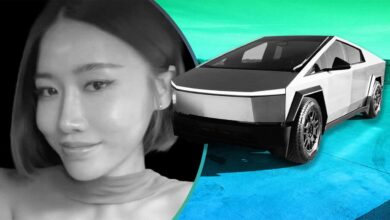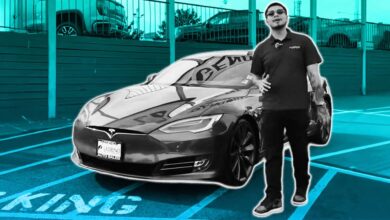Here Are Some Of The Most Clever Accessories And Features

I’ll level with you all here – the Xiaomi YU7 reveal and test drive was overwhelming. Honestly, most Chinese cars are, for a few reasons. While in the U.S., it’s not uncommon for brands to announce somewhat minor changes to products that are kind of conventional at every turn, in China, seemingly every brand has an overwhelming amount of innovation.

Photo by: Xiaomi
The Xiaomi YU7 is one such car. Practically every interaction I’ve experienced with the Ferrari-shaped crossover would be a novel, world-changing event in markets outside of China. The YU7’s cell-phone-inspired level of customization and accessories may be some of the most innovative things I’ve seen before in the industry. We’ve already covered the row of buttons available to buy at a Xiaomi store, but the YU7 brings new upgrades and add-ons. Here are some of my favorites.
Sneezing is a human part of life here, but when it comes to stashing a towel or tissue in a vehicle, it’s not exactly an elegant solution. Well, Xiaomi’s designers have thought of everything here–the YU7 has a nice alcove behind the infotainment screen meant to house a box of tissues. The box itself can be color-matched to the car’s interior (in my tester’s case, this Hermes-esque orange).
I find it to be a crafty solution. Why haven’t manufacturers thought of this more?

Photo by: Kevin Williams/InsideEVs

Photo by: Kevin Williams/InsideEVs

Photo by: Kevin Williams/InsideEVs
This was already present on the SU7 sedan, but for the YU7 crossover, the powered accessory ports have gotten a bit of a refresh. Namely, the two on either side of the dashboard are now powered.
Namely, they’ve got up to 28 watts worth of power. A lot more than the 5 or 10 common on the typical USB-C port found on most cars.
This means they can do a bit more and handle more powerful accessories. Of course there’s an upright cellphone holder, but Xiaomi’s holder has wireless charging. Or, either port could be used for running power to accessories, like, say, a GoPro camera. The possibilities are endless.

Photo by: Xiaomi
This may be the most interesting feature of the YU7, and thus far it’s only the YU7, not the SU7 sedan. Essentially, it’s a button that’ll do whatever you want it to, within reason — not exaggerating here. Remember Amazon Dash? Sort of like that.

Photo by: Kevin Williams/InsideEVs
Basically, the button is paired to the car and can be attached to one of the several magnetic mount points all over the car. For these pictures, I’ve placed the button on the inside panel of the front passenger seat.
There are hundreds of operations that the button can do, especially when it’s connected to the rest of Xiaomi’s smart home suite. So, if you wanted the button to start your heat or AC, that’s cool too.

Photo by: Kevin Williams/InsideEVs
The most interesting part is what you can make the car do when the button is pressed. There are literally hundreds of operations, some of which can be programmed in tandem. If you always wanted the car to open its driver window and pop the trunk at the same time, then, well, you can do that.
For me, I found the car’s button may be the most practical when mapped to its navigation features. Imagine being on a long road trip or in a strange area, the button could save a lot of time when trying to get home. The button could be programmed to start navigation to your home (or some other destination), without the need to go through menus to add or enter an address. Or even the need to open the app.
Some of the InsideEVs staff say this sounds kind of similar to the Tesla SEXY buttons, but those are aftermarket and require a bit of coding to work. This works right out of the box, and is manufacturer-supported.

Photo by: Xiaomi
It’s not easy navigating a new software system, especially in a language that I can’t read or speak. But I found Xiaomi’s software to be fairly intuitive.
Also, it had Apple CarPlay, a rarity in itself in China. In many cars, the use of CarPlay will lock out any in-car app-based navigation. That’s not so good for this car’s assisted driving features, which can do some steering and autopilot-style navigation on their own.
That won’t be an issue with the YU7, because Xiaomi’s software supports multitasking. Like a phone or a computer, the car can run two tasks at once, on the same screen. CarPlay can be docked to ⅔ of the screen, while the other third is used for the car’s navigation. Of course, this docking feature can be used for other in-car apps, too.

Photo by: Xiaomi
The Xiaomi YU7 is a clever car, and once again just demonstrates how far ahead China’s car market is. Perhaps more automakers will learn lessons from Xiaomi and apply them to their cars.
Contact the author: Kevin.Williams@InsideEVs.com
Correction July 7, 1:09 P.M. ET: An earlier version of this post title said “Xiaomi SU7.” This post is about the YU7, which is the SUV model.
Source link



